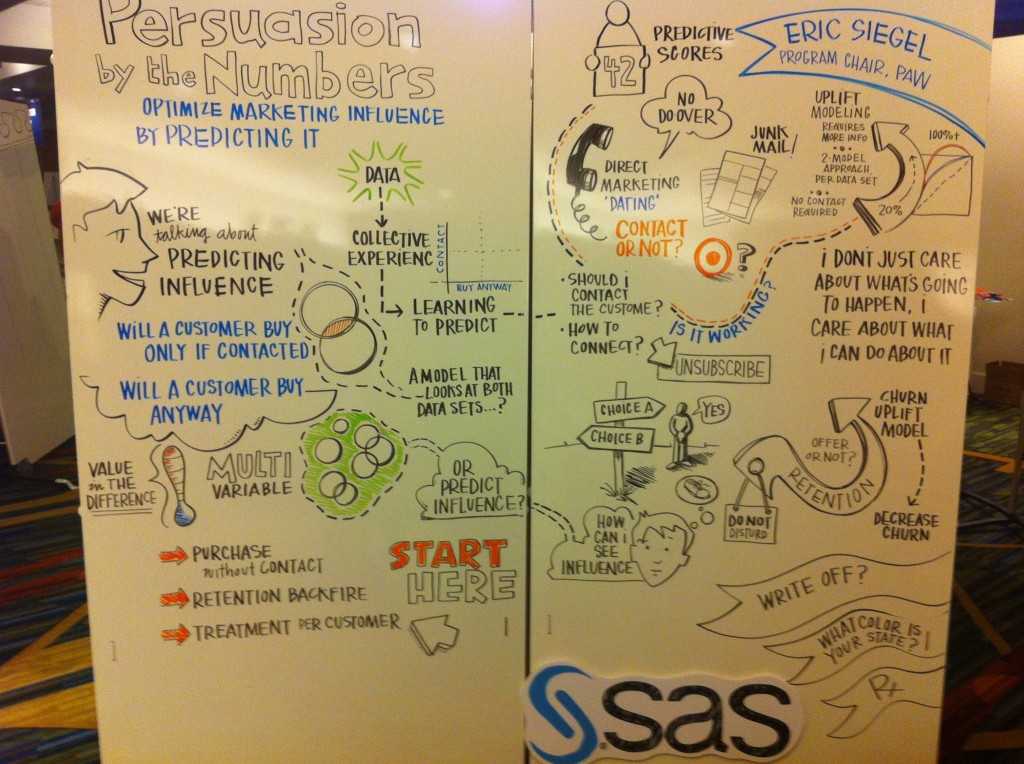 The short answer: you use net lift modeling. Or as SAS called it when we released it as part of SAS Enterprise Miner 7.1 M1 at the end of 2011, incremental response modeling. Eric Siegel gave an interesting keynote on this topic at Predictive Analytics World San Francisco, "Persuasion by the Numbers: Optimize Marketing Influence by Predicting It."
The short answer: you use net lift modeling. Or as SAS called it when we released it as part of SAS Enterprise Miner 7.1 M1 at the end of 2011, incremental response modeling. Eric Siegel gave an interesting keynote on this topic at Predictive Analytics World San Francisco, "Persuasion by the Numbers: Optimize Marketing Influence by Predicting It."
Most marketing campaigns aim to predict customer behavior to know which customers might be most interested in an offer, but the fallacy in this approach might also be considered its success. You may be very accurate in your modeling, at least in terms of predicting who would be most interested, but that's not the right question to ask. You want to predict the influence your marketing treatment will have, not customer behavior, so the better question to ask would be: "Which customers would take my offer ONLY if they received it?"
Easier said than done, as Eric explained in his talk, since it requires different data and modeling techniques. But he passionately believes it is worth trying and used his talk to try to convince the audience to join him. A show of hands indicated that only 10 or so in the audience of several hundred are currently using this approach, although in this non-scientific survey by the end of his talk the number MORE interested in trying it out grew to half the crowd!
Applications for net lift modeling extend beyond marketing into areas like personalized medicine, where your question is whether a patient will respond ONLY if treated, a point Max Kuhn from Pfizer made the next day in his talk "Right Medicine, Right Patient." He speculated about other applications, such as collections departments that could consider whether to offer a deeper write-off and political campaigns evaluating whether to canvass a particular state or not.
Eric explained that the promise of incremental response modeling is that your lift curve can actually rise above 100 percent. He gave one case study from US Bank on their home equity line of credit campaign. Mostly this product sold itself (people who could be classified as "sure things"), but they wanted to increase sales. However, they knew certain marketing campaigns could actually have an adverse effect: someone who would have signed up on impulse when offered one at the bank might might believe they needed to shop around for rates if they received an offer in the mail. Using net lift modeling they were able to successfully identify the "persuadables," increasing their ROI five times, cutting costs by 40 percent, and increasing their lift by a factor of two.
With churn incremental response modeling you want to separate out those "sleeping dogs," who might be stirred to churn ONLY if contacted, from those who would benefit from a retention campaign. For example, Telenor in Norway found that with incremental response modeling their campaign ROI increased 11 times and churn was reduced a further 36 percent relative to the baseline. So whether your focus is who to avoid, because they might respond negatively if contacted, or who might respond ONLY if contacted, incremental response modeling is worth checking out. For those of you attending SAS Global Forum next month in Orlando, Dave Duling will be doing a superdemo of our new incremental response node in Enterprise Miner, and our friendly folks on the demo floor would be happy to show you how it works if you stop by the data mining booth.
